- All Posts
- /
- 3 Tips for Better Product Update Emails

3 Tips for Better Product Update Emails
Messaging and Automation-
 Jimmy Daly
Jimmy Daly
-
Updated:Posted:
On this page
What’s the difference between content marketing and product marketing?
Content is a lead-generation tool, an education platform, and a brand-building strategy. Goals center around audience growth and engagement.
Product marketing is very different. A product marketer aims to understand every facet of the customer experience. They need to know why customers use the product in the first place and how new features and updates can entice more customers to join.
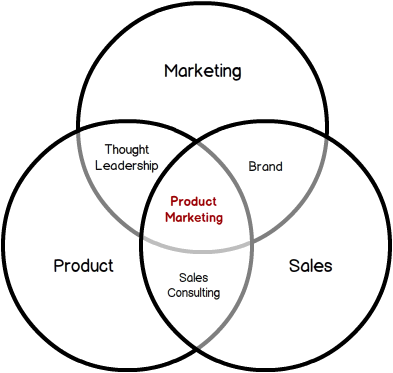
Source: Glen Lipka
Of course, there is overlap and in some cases, a marketing manager is handling both roles. Bridging the gap from education to activation is no easy task (as we’ve discussed on this blog before). And while we’re oversimplifying the role of product marketers, I’m sure you can already see the importance of collaboration between product and marketing teams.
Product update emails are one example where content and product teams must harmonize for a successful outcome. In this post, we’ll break down the elements of a great product update email and offer some examples you can use as inspiration in your own marketing.
1. Know your audience and speak to them.
Is the SaaS world, every business wants to reach the product, marketing and engineering teams. The nature of most SaaS companies requires buy-in from all three groups for the customer to realize the full value of the product. This makes it difficult to focus on one audience and speak to them directly.
Engineers, for example, will be interested in speed improvements, uptime and integration, while marketers are more apt to respond to better reporting and analytics tools. If your product updates include both, you might end up diluting the email and therefore speaking to no one.
Defining your target audience is an important task that should guide marketing, sales and product development. When it comes time to queue up a product update email, the nitty gritty work of creating buyer personas should already be done. But just in case it’s not, here are a few things to consider.
- Product updates should be written for your true fans. That’s not to say that others won’t find them interesting, but information about a product isn’t a lead-gen tool or a sales tactic – it’s fuel for an already burning fire.
- It’s difficult – if not impossible – to serve two masters. Decide whether your target audience is marketers, developers or another group and segment accordingly. It’s likely there is crossover but do your best to focus the message for each target group.
- Employ the right language for each group and consider sending the email from different members of the team. At Vero, for example, we send product updates from our head of product, and marketing emails from Chris, our CEO.)
Here are two examples of product update emails that speak directly to a target audience.
Example #1: Strava
Strava is a mobile app that helps runners and cyclists track distance and pace. It’s equally useful for each group, but they segment their product update emails based on information they gather in their onboarding process.
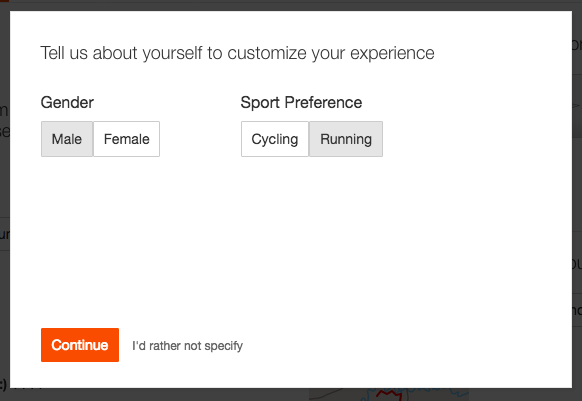
With those two simple pieces of data, Strava can customize everything from social feeds to product emails. The effect is extraordinary. If they mentioned cycling in the email, it would immediately feel irrelevant. If they mention both running and cycling, it would water down the message.
Strava makes sure they know their customers so they can speak to them directly.
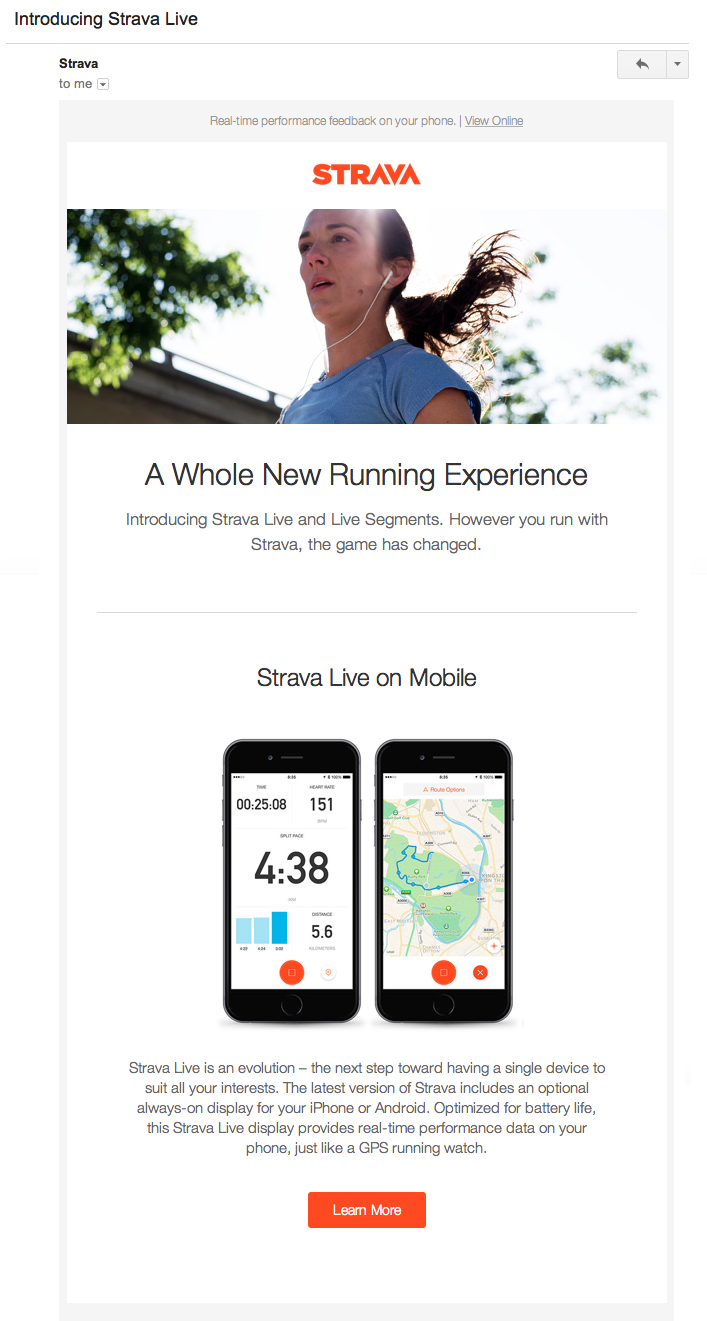
Example #2: Canva
Canva decided long ago that they would target marketers who need design work but don’t have advanced design skills. The product makes it easy for anyone to create and export beautiful designs for social media and other marketing campaigns. Their product updates reflect that. Even the design types indicate that this email was intended for someone working in marketing.
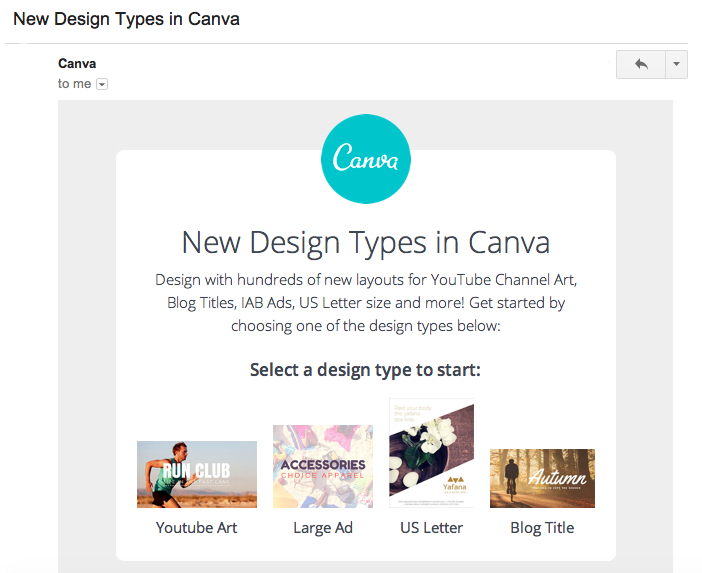
2. Use visuals in your product update emails
83% of humans are visual learners.
The source is this number is difficult to track down, but design firm Alphachimp believes it’s a moot point.
Saying that 83% of people are visual learners is like declaring that 83% of people think that legs make walking easier!
The simple fact is that nearly all humans benefit from visual aids.
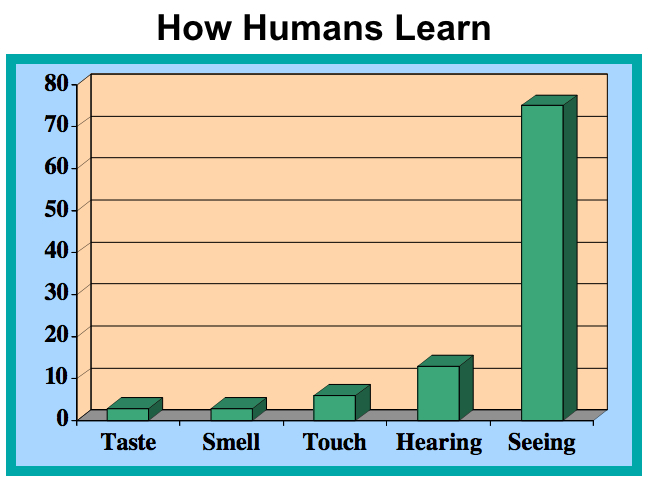
There are many companies that use visuals to support their product updates but a handful really stand out.
Example #1: Buzzsumo
Buzzsumo uses a screenshot of their product that features the update, in this case search filters. This is as simple as it gets, and it’s a great starting point for businesses that aren’t yet sending product update emails. Active users will immediately understand how the new feature works based on the visual alone, while other users can read the copy for context.
Buzzsumo also includes links where users can see the new feature in action. This update is both accessible and actionable, which is everything you can hope for in a product update email.
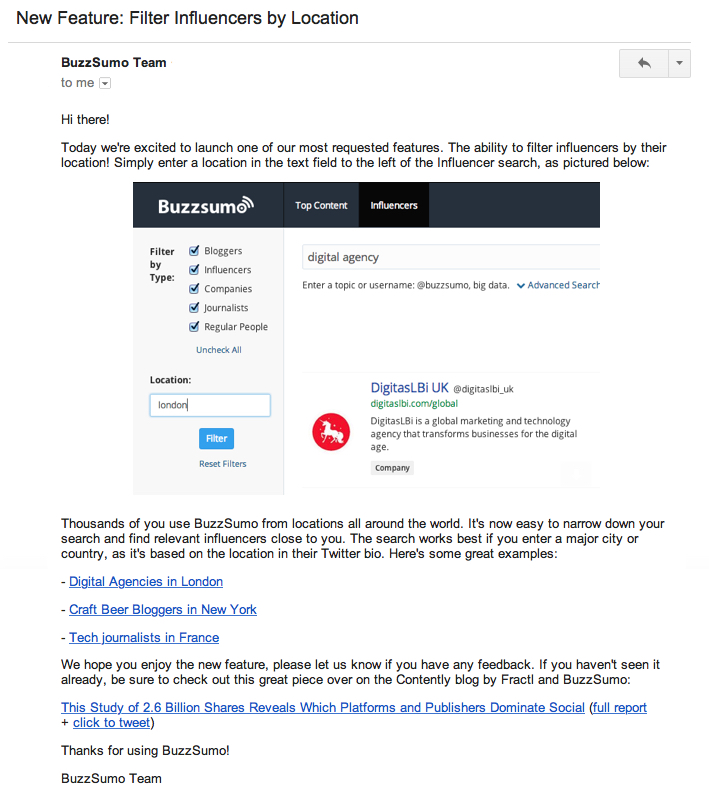
Example #2: Invision
As a company focused on helping designers, it’s not surprising that Invision‘s email looks so good. But what they’ve done with the image is actually more than just beautiful, it’s functional.
Coupled with the short copy below it, the image triggers an “aha” moment for Invision customers who have been looking for a way to improve collaboration. This is no stock photo – it’s a static demonstration of the new feature.
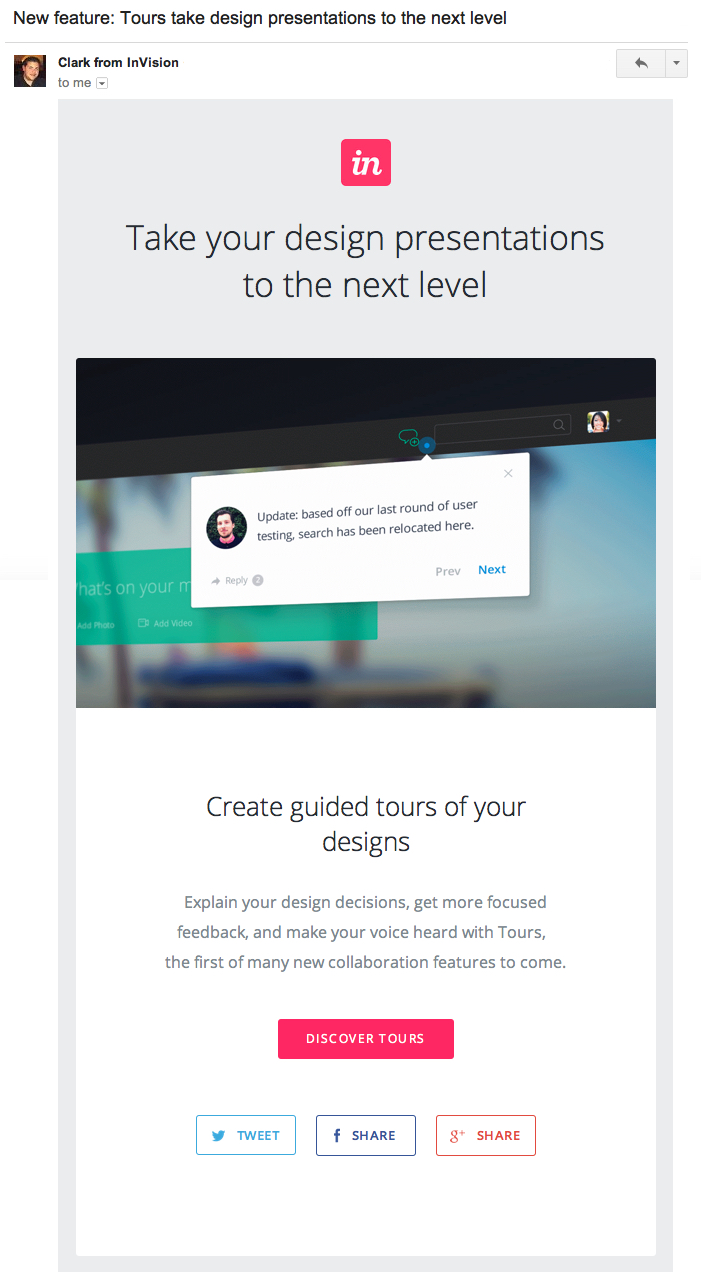
Example #3: CloudApp
Once you’ve got screenshots down pat, you might consider adding simple animation like CloudApp. They use animated GIFs to demonstrate new features inside their emails.
Here’s a quick tutorial on creating GIFs like I’ve done in the image below.
- Use QuickTime to record yourself demonstrating a new feature. It’s free on every Mac and is by far the easiest way to record your screen.
- Download GIFBrewery from the Mac App Store. It costs $5 but it’s much easier to use than the free alternatives.
- Import your screen recording into GIFBrewery for editing. You can crop the image to focus on the new feature, choose a playback speed and quickly export a GIF that will work in your emails.
This is an underutilized tactic that many SaaS companies could benefit from. GIFs are easier to view than videos, plus they work inside the inbox by default in most email service providers.
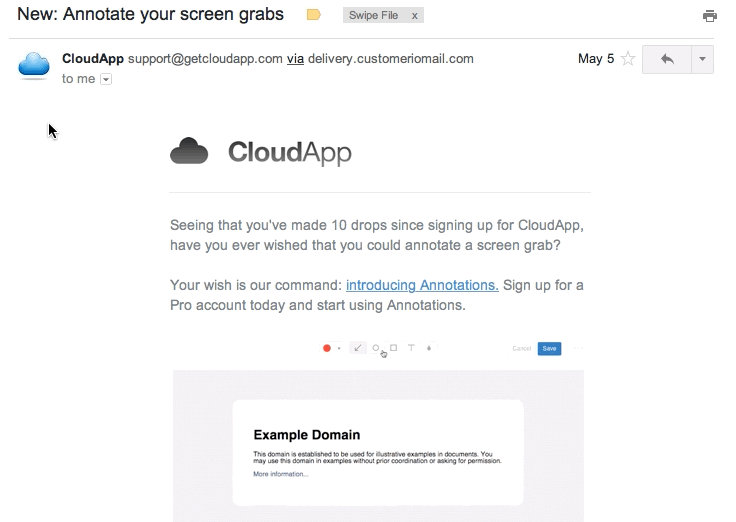
3. Be consistent.
Consistency relies on two important factors:
- Constraints
- Expectations
Here’s what I mean.
Constraints, like a schedule, actually boost creativity. Writer James Clear committed to a twice-weekly publishing schedule, regardless of whether he felt like writing or not. That constraint turned him into a better writer and very popular blogger.
Expectations are the handshake deal you make with customers when they buy your product or subscribe to your emails. If you promise a daily email like Digg, you better send an email every day. And if you promise a bimonthly newsletter like Moz, you better not send 10 emails every month.
Constraints + Expectations = Consistency
When it comes to product update emails, it’s best to commit to schedule. That way, you’ll be forced to evaluate your product development on a regular basis and your customers will expect to hear from you.
Example #1: Periscope
Periscope, a data visualization tool, has been sending me product updates every Monday since I signed up. I expect them now, and look forward to seeing what new features can help me get more value from the product.
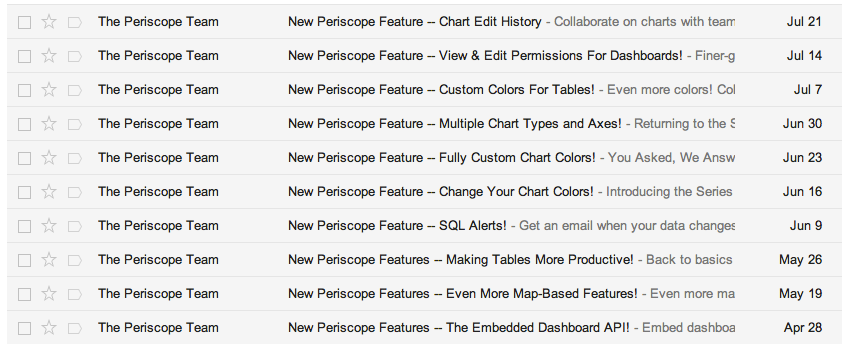
The emails are actually tutorials. Every new feature is described in detail. It’s almost like getting a new onboarding email each week.
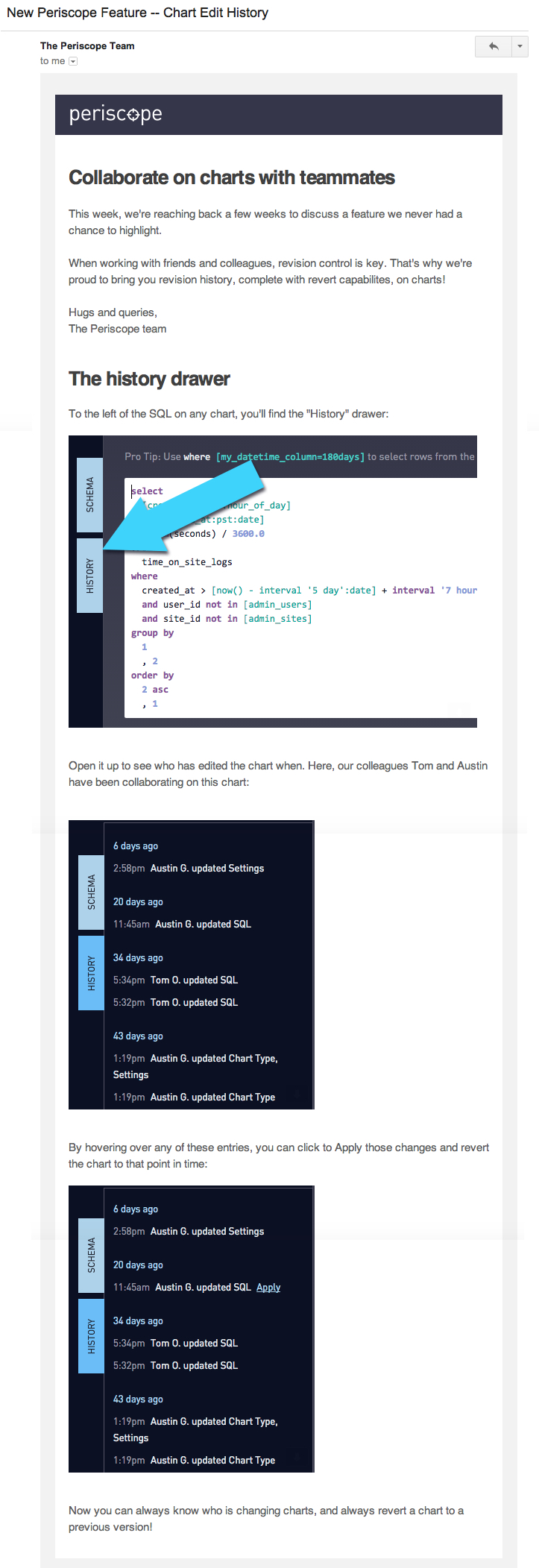
Example #2: Zapier
Zapier uses the same weekly update strategy.
But because Zapier has so many partners, and therefore so many updates, they use the email to drive customers to their site where they can explain each in greater detail.
Notice also that Zapier includes a call to action to upgrade to a premium account. This is the perfect place to include a strong CTA since the entire body of the email focuses on increasing the value of the product.

TL;DR: Product Update Emails Best Practices
Here is a quick overview a few things to keep in mind when creating your own product update emails.
- Focus on benefits, not features. Think about how Apple sold the first iPod with the slogan, “1,000 songs in your pocket” instead of “1GB of MP3s.”
- Decide who you are writing for before you create the email.
- Work with your product team to understand why they made the changes. Turn this information into a customer success tool by explaining to customers why your engineers are so darn smart.
- Decide on a schedule and stick to it.
- Use visual aids where it makes sense.
- Keep your copy short, sweet and focused.
- Check out the Really Good Emails library for 100+ more examples.


